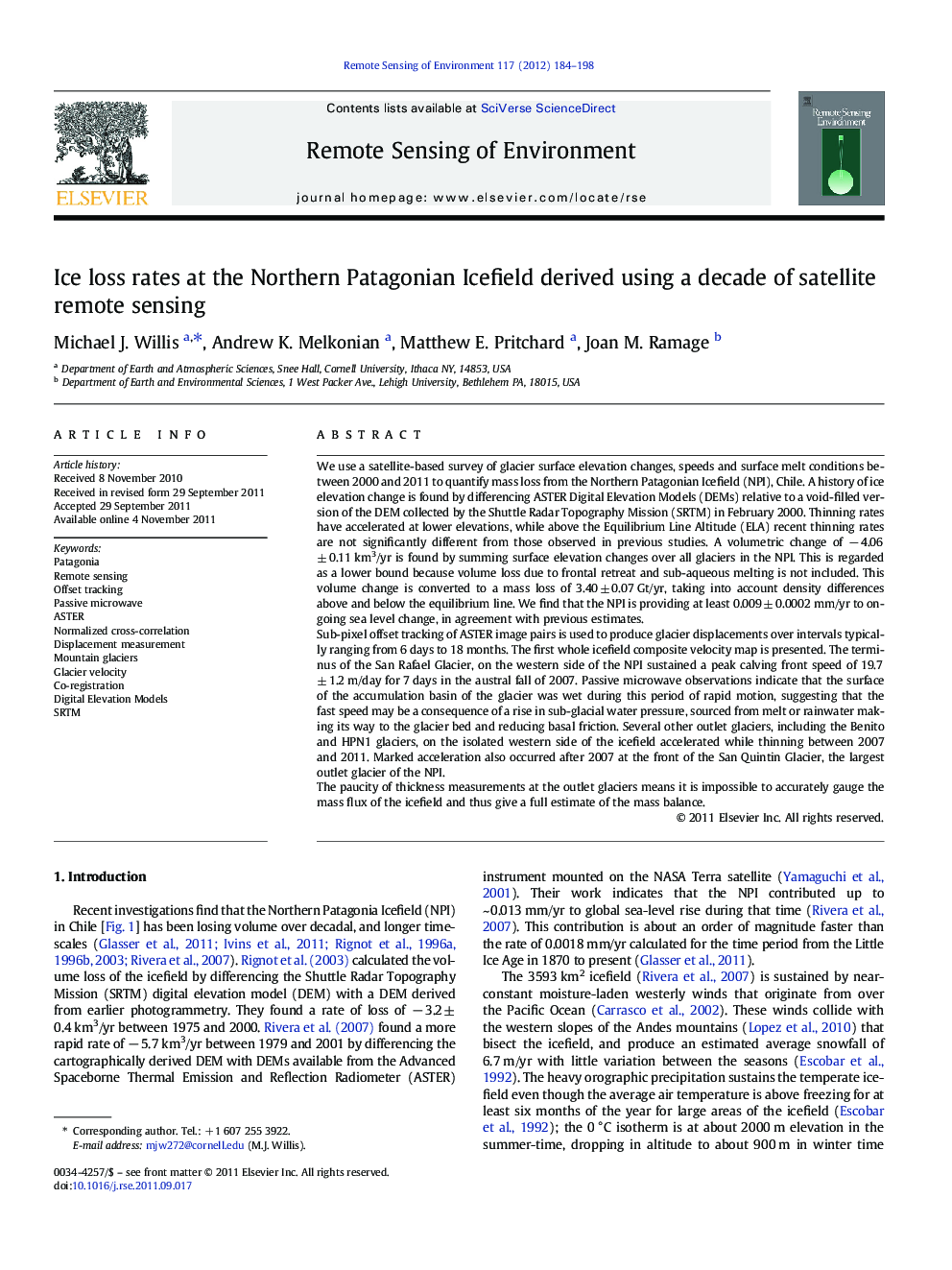| کد مقاله | کد نشریه | سال انتشار | مقاله انگلیسی | نسخه تمام متن |
|---|---|---|---|---|
| 4459263 | 1621283 | 2012 | 15 صفحه PDF | دانلود رایگان |

We use a satellite-based survey of glacier surface elevation changes, speeds and surface melt conditions between 2000 and 2011 to quantify mass loss from the Northern Patagonian Icefield (NPI), Chile. A history of ice elevation change is found by differencing ASTER Digital Elevation Models (DEMs) relative to a void-filled version of the DEM collected by the Shuttle Radar Topography Mission (SRTM) in February 2000. Thinning rates have accelerated at lower elevations, while above the Equilibrium Line Altitude (ELA) recent thinning rates are not significantly different from those observed in previous studies. A volumetric change of − 4.06 ± 0.11 km3/yr is found by summing surface elevation changes over all glaciers in the NPI. This is regarded as a lower bound because volume loss due to frontal retreat and sub-aqueous melting is not included. This volume change is converted to a mass loss of 3.40 ± 0.07 Gt/yr, taking into account density differences above and below the equilibrium line. We find that the NPI is providing at least 0.009 ± 0.0002 mm/yr to ongoing sea level change, in agreement with previous estimates.Sub-pixel offset tracking of ASTER image pairs is used to produce glacier displacements over intervals typically ranging from 6 days to 18 months. The first whole icefield composite velocity map is presented. The terminus of the San Rafael Glacier, on the western side of the NPI sustained a peak calving front speed of 19.7 ± 1.2 m/day for 7 days in the austral fall of 2007. Passive microwave observations indicate that the surface of the accumulation basin of the glacier was wet during this period of rapid motion, suggesting that the fast speed may be a consequence of a rise in sub-glacial water pressure, sourced from melt or rainwater making its way to the glacier bed and reducing basal friction. Several other outlet glaciers, including the Benito and HPN1 glaciers, on the isolated western side of the icefield accelerated while thinning between 2007 and 2011. Marked acceleration also occurred after 2007 at the front of the San Quintin Glacier, the largest outlet glacier of the NPI.The paucity of thickness measurements at the outlet glaciers means it is impossible to accurately gauge the mass flux of the icefield and thus give a full estimate of the mass balance.
► Thinning rates, speeds and melt duration for Northern Patagonian Icefield are found.
► Thinning and melt are pervasive.
► Thinning and speeds have accelerated at some parts of the icefield.
► Mass loss rate between 2001 and 2011 similar to that of previous decade.
► Small icefield contributes about + 0.01 mm/yr to global sea level change.
Journal: Remote Sensing of Environment - Volume 117, 15 February 2012, Pages 184–198